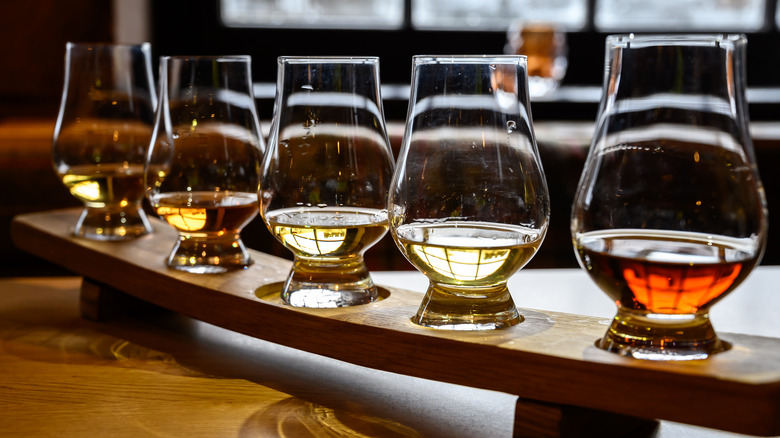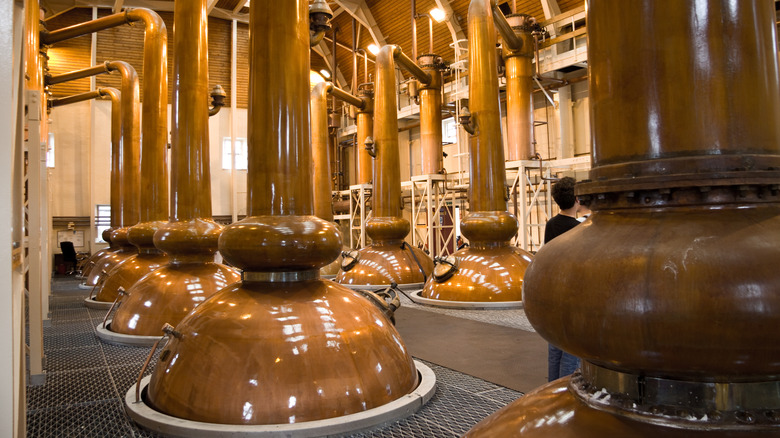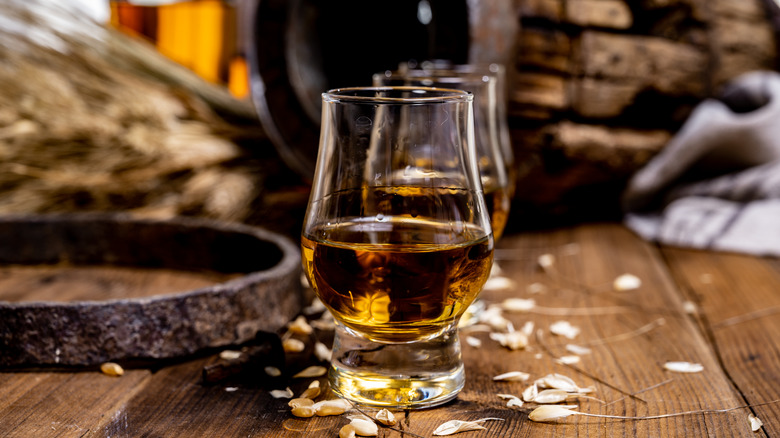The Difference Between Single-Grain And Single-Malt Scotch Whisky
If you're new to the world of Scotch whisky, you may find yourself scratching your head right off the bat. While it may not be quite as intimidating as decoding a French wine label, there are terms like "single grain" and "single malt" to decipher and the meaning behind them isn't always straightforward. All Scotch whisky must be made entirely in Scotland and spend at least three years aging in oak barrels. But there are plenty of differences outside of these two standards that make each Scotch unique. For instance, there are several whisky regions in Scotland and each one is known for producing Scotches with unique flavor profiles.
Scotch is, perhaps, best known for being produced primarily from barley. With this in mind, what, then, could terms like "single grain" and "single malt" mean? Scotches labeled as "single grain" are, in fact, made with several grains, whether malted or unmalted, at one distillery. On the other hand, single malt whiskeys are those made with 100% malted barley mash at a single distillery. As you can see, in the case of these, "single" doesn't necessarily describe the grain or grains the Scotch is made with, it more accurately describes the fact that the whisky has been produced at one single distillery.
Some Scotch isn't exclusively made with barley
Single-grain Scotch whisky can be made with a mixture of cereal grains like barley, rye, wheat, and corn that is unmalted (which essentially means the grains are in a raw state), or malted (the sprouted grains are soaked until fermentation occurs). In general, single-grain whiskies tend to be softer in flavor with more sweetness when compared to single-malt whiskies. In addition, these types of whiskies are distilled in column-style stills.
Single malt whisky must be made from malted barley and no other types of grain and is distilled in pot stills which are known for producing rich, deep flavors. Some in the Scotch connoisseur crowd agree that single malts are superior to single grains, but, truthfully, both types can be incredibly complex and delicious. Like wine, a good Scotch depends on what you like in a whisky and it's the region in which a Scotch is from that will give you a better indication of whether you'll enjoy a particular type.
For example, if you enjoy robust, full-bodied, smoky whiskies, try one from the region of Islay which is known for using a generous amount of peat moss smoke. For something much lighter with toasty, creamy flavor notes, consider a Lowlands whisky.
Scottish blends are actually the most plentiful
Single malt, single grain, and whisky regions just scratch the surface of the types of Scotch in the whisky world. There are also blended whiskies which, in turn, are separated into blended Scotch whiskies, blended malt whiskies, and blended grain whiskies. Most of the Scotch sold around the globe is blended. For someone who wants to dive into the differences of Scotland's most famous spirit, consider visiting an establishment that offers Scotch flights to get a taste of some of the variations in flavor and aroma.
Scotch is just one type of whisky made across the globe. America, Canada, Japan, and Ireland also produce some reputable versions of the spirit, with areas like England and India gaining momentum in the rye world. But Scotland remains the largest producer with the biggest reputation, in part due to its long list of single grains and single malts that have been created for centuries.



